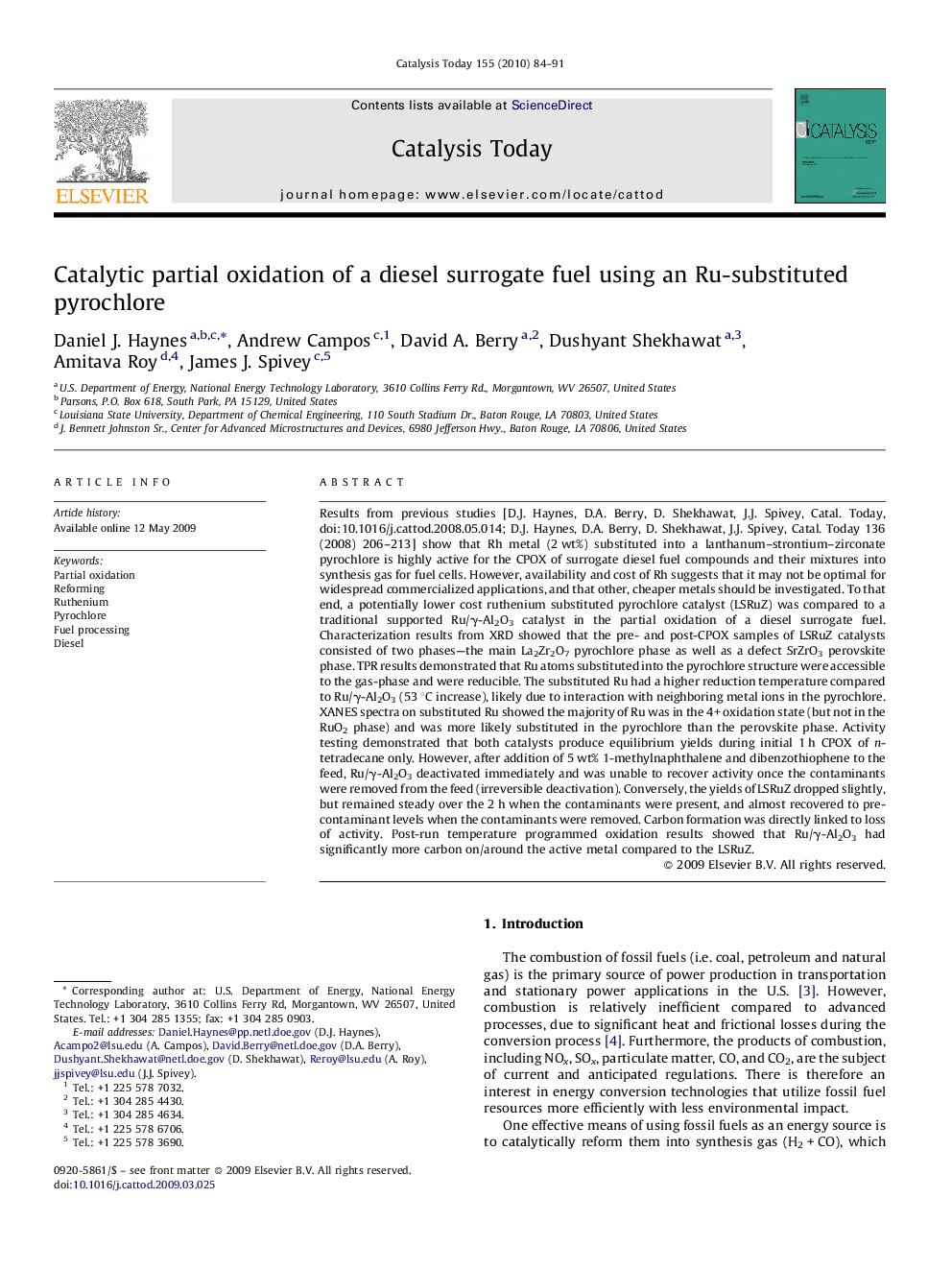| کد مقاله | کد نشریه | سال انتشار | مقاله انگلیسی | نسخه تمام متن |
|---|---|---|---|---|
| 56452 | 47083 | 2010 | 8 صفحه PDF | دانلود رایگان |

Results from previous studies [D.J. Haynes, D.A. Berry, D. Shekhawat, J.J. Spivey, Catal. Today, doi:10.1016/j.cattod.2008.05.014; D.J. Haynes, D.A. Berry, D. Shekhawat, J.J. Spivey, Catal. Today 136 (2008) 206–213] show that Rh metal (2 wt%) substituted into a lanthanum–strontium–zirconate pyrochlore is highly active for the CPOX of surrogate diesel fuel compounds and their mixtures into synthesis gas for fuel cells. However, availability and cost of Rh suggests that it may not be optimal for widespread commercialized applications, and that other, cheaper metals should be investigated. To that end, a potentially lower cost ruthenium substituted pyrochlore catalyst (LSRuZ) was compared to a traditional supported Ru/γ-Al2O3 catalyst in the partial oxidation of a diesel surrogate fuel. Characterization results from XRD showed that the pre- and post-CPOX samples of LSRuZ catalysts consisted of two phases—the main La2Zr2O7 pyrochlore phase as well as a defect SrZrO3 perovskite phase. TPR results demonstrated that Ru atoms substituted into the pyrochlore structure were accessible to the gas-phase and were reducible. The substituted Ru had a higher reduction temperature compared to Ru/γ-Al2O3 (53 °C increase), likely due to interaction with neighboring metal ions in the pyrochlore. XANES spectra on substituted Ru showed the majority of Ru was in the 4+ oxidation state (but not in the RuO2 phase) and was more likely substituted in the pyrochlore than the perovskite phase. Activity testing demonstrated that both catalysts produce equilibrium yields during initial 1 h CPOX of n-tetradecane only. However, after addition of 5 wt% 1-methylnaphthalene and dibenzothiophene to the feed, Ru/γ-Al2O3 deactivated immediately and was unable to recover activity once the contaminants were removed from the feed (irreversible deactivation). Conversely, the yields of LSRuZ dropped slightly, but remained steady over the 2 h when the contaminants were present, and almost recovered to pre-contaminant levels when the contaminants were removed. Carbon formation was directly linked to loss of activity. Post-run temperature programmed oxidation results showed that Ru/γ-Al2O3 had significantly more carbon on/around the active metal compared to the LSRuZ.
Journal: Catalysis Today - Volume 155, Issues 1–2, 1 October 2010, Pages 84–91